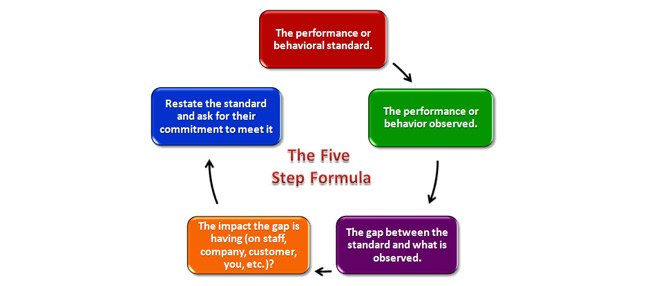Feedback: The Fuel That Drives Optimal Performance
Posted in Dynamic Training News, Improve Sales & Profits, Leadership Development & Training, Performance Management, Talent Development & Training, Team Building & Alignment on May 24,2016
What keeps people going, contributing their best efforts whatever the task?
Among the many possible answers, perhaps the most effective is feedback from the person’s supervisor. Effective feedback lifts the spirits and encourages people to contribute their best efforts.
Why People Need Feedback
Let’s personalize this! Suppose you take on a challenging assignment, which requires extra effort on your part. Not only do you invest your time, you go the extra mile and deliver your assignment on time and under budget. All in all, you’re quite pleased with what you achieved.
What happens if your boss is silent on your accomplishment? Chances are:
You’ll assume that the assignment in general was of relatively low importance since you got no feedback.
In the absence of getting feedback, people often assume a negative. So you may wonder if somehow what you did disappointed your boss or someone else up the line. Your confidence and engagement may take a hit.
Experiencing no appreciation or direction means that you are less likely to actively seek out other assignments. When you do get asked to take on a project, you’ll do it, but why bother extending yourself if nobody notices?
Let’s suppose your manager is someone who primarily gives negative feedback in the form of criticism. He or she points out a few things he or she thinks went wrong, but infrequently acknowledges all of the things that went right. If this describes your manager, changes are:
You’ll likely remember how you felt after receiving your boss’s stinging criticism, but forget exactly what it was that was he or she said. Any lessons here may be overwhelmed by the criticism.
You may be a bit demoralized immediately afterwards, and feel less like going the extra mile. In other words, a hit to your engagement levels.
You may even adopt criticism-avoidance behaviors in the future because of the negative feelings that remained. What do you have to do to avoid getting criticized, instead of what do you have to do to deliver exceptional results.
Two Highly Effective Methods for Giving Feedback

1. The SIPS Formula. The acronym SIPS give you the four elements for delivering effective feedback. In the graphic above, you can pick out each SIPS element at work:
a. Specific – working on the problem with the Davis order
b. Immediate – the owner just called me to sing your praises
c. Personal – The use of Angie’s name and using you three times in 4 sentences
d. Sincere – communicated by his eye contact, tone of voice, and genuine appreciation
In the example above, delivering the feedback took less than 20 seconds, a mere third of a minute. Angie will be on Cloud 9 for the rest of the day and guaranteed on her next challenging order, she’ll go the extra mile. A third of a minute in exchange for superior attitude and performance for at least a full day. Amazing!
2. The Five Step Formula

This approach works equally well for either positive reinforcement feedback, or corrective feedback. You can also apply the SIPS principles (specific, immediate, personal, sincere) when delivering feedback with this method.
Positive Feedback That Encourages
Let’s say that Sam is an installer working where the standard for a complete installation is two hours. Here’s what Sam’s supervisor says after noticing Sam’s installs are completed in just 90 minutes and customers rate the installations as excellent:
1. “Sam, you know that our standard for high quality installations is two hours per installation.
2. “Over the past month you have averaged 90 minutes per installation and maintained excellent installation ratings from your customers.
3. “You’ve saved a half hour per installation on average for the entire month, and as a result, completed an additional 22 installations for the month.
4. “What that means to our customers is that they are thrilled at getting the installation done faster than they expected, so they are happier with our service. Over time they stay with us longer and recommend us to their friends. Plus, by completing the 22 installation we netted better revenue. You’ve made the department look great and I’m proud of your excellent work. Thank you!
5. “You’ve really pushed the standard for your own performance. What can we do to support you to repeat your outstanding work?”
A positive tone of voice and open body language enhance the delivery of this feedback, making Sam aware of the impact of his accomplishment. You can bet he’ll give his best effort as a result.
Corrective Feedback That Encourages
Suppose Elle, another installer, takes 2.5 hours per installation but still receives generally positive customer reviews for installations. Here’s the same Five Step Method used to deliver corrective feedback:
1. “Elle, you know that our standard for high quality installations is two hours per installation.
2. “Over the past month you have averaged 2.5 hours per installation with positive installation ratings from your customers.
3. “Taking a half-hour longer per installation means that you completed one less installation per day for the month, or 22 fewer installations than were needed.
4. “What that means to our customers is that some people didn’t get their installation completed as expected, so they are not as thrilled with our service as we want them to be. We had to deploy extra installers to cover the shortfall. The net was that we had to increase our costs to meet our customer commitments.
5. “Our standard is installations in two hours while maintaining excellent quality. You’ve done this in the past. I need your full commitment to meet or do better than the two hour standard. Elle, I believe in you and your ability to do this! So…can I count on you to meet this standard?”
Again, a positive tone of voice and open body language enhance the delivery of this corrective feedback. No accusations or accusatory tone, but warmth, encouragement, and concern. Elle walks away thinking about what needs to be done to get back to her prior performance, knowing her boss believes in her.
Bottom Line
How a supervisor provides feedback to his or her staff goes a long way toward building trust and encouraging optimal performance. Silence and criticism discourage optimal performance and are never effective methods of giving feedback. Successful leaders intentionally look for opportunities to provide regular, effective feedback to each member of the team. When this happens, overall performance rises and the entire team is more engaged.
Boyer Management Group works with some of the world’s top employers by helping them get the most out of their talented people. Our extensive leadership development course catalog provides effective skills-building for everyone in the organization, from the new / developing leader to the seasoned C-level executive. Our coaching programs produce significant results in compressed periods of time. We also help job seekers, higher ed, and employment services connect people to better jobs faster. Our acclaimed career development tools, the Job Search Readiness Assessment for experienced professionals/skilled workers and Graduate Employment Preparedness Assessment for students/recent grads both assess and explain over 2,500 career and job search best practices. To find out more, please email us at info@boyermanagement.com, or call us at 215-942-0982.
Latest Leadership Posts
Upskill Your Career for 2026 – Part 1 Continue Reading
Seven Things You Must Accomplish by Age 25 Continue Reading
Why do You Permit C-Players to Destroy Your Team? Continue Reading



